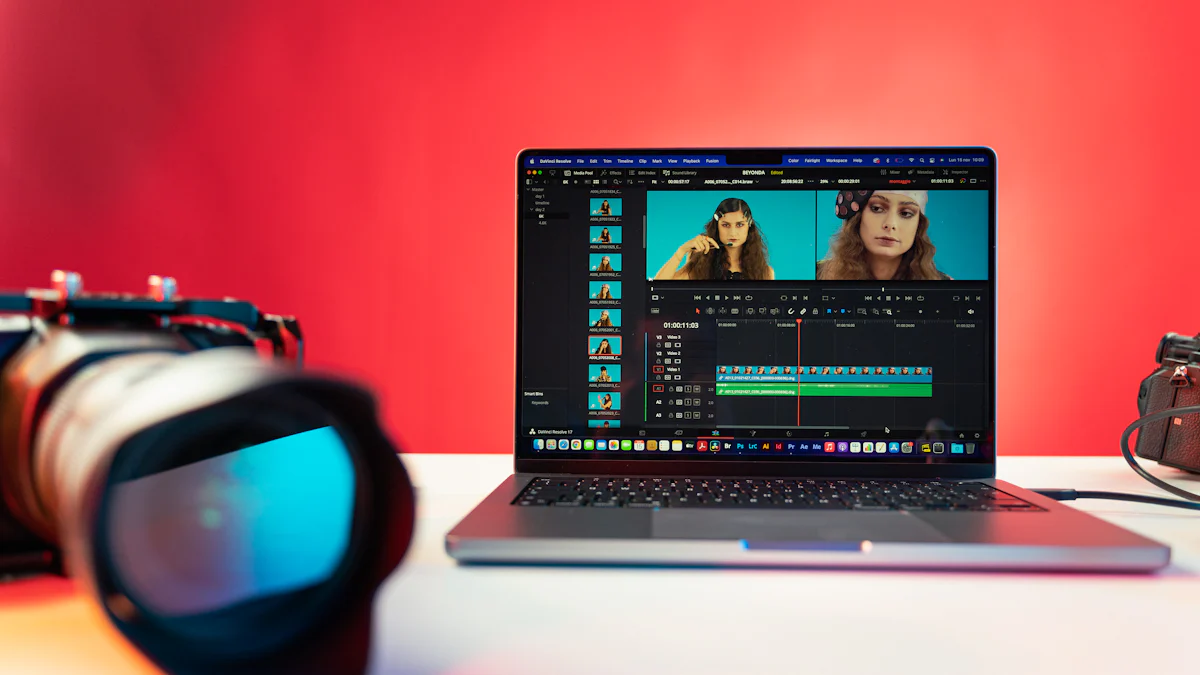Exploring SAM 2's Real-Time Segmentation Capabilities

Introducing SAM 2: The next generation of Meta Segment Anything Model for videos and images. SAM 2 represents a major advancement in real-time object segmentation. This model can segment any object in an image or video and consistently follow it across all frames in real-time. Real-time segmentation holds immense importance in various fields, offering better accuracy and faster processing times. SAM 2's capabilities extend to diverse applications, making it a valuable tool for industries ranging from video editing to scientific research.
Introducing SAM 2: The next generation of Meta Segment Anything Model for videos and images

Overview of SAM 2
Development and history
Meta developed SAM 2 to advance the capabilities of real-time object segmentation. The model builds on the success of the original Segment Anything Model (SAM). Researchers focused on creating a unified model that could handle both images and videos. This development aimed to meet the growing demand for efficient and accurate segmentation in various applications.
Key features
SAM 2 offers several key features that set it apart from its predecessor:
Real-time segmentation: The model can process approximately 44 frames per second.
Zero-shot generalization: SAM 2 can segment objects in unseen visual domains without custom adaptation.
Unified architecture: The model supports both image and video segmentation.
Memory mechanism: This feature allows SAM 2 to accurately segment objects across space and time.
Enhanced accuracy: SAM 2 outperforms the original SAM in both image and video segmentation accuracy.
Technical Specifications
Architecture
SAM 2 employs an innovative streaming memory design. This architecture allows the model to process video frames sequentially. The design makes SAM 2 particularly well-suited for real-time applications. The model integrates seamlessly with video data, offering promotable segmentation for both static images and dynamic video content.
Algorithms used
SAM 2 uses advanced algorithms to achieve its state-of-the-art performance. The model incorporates machine learning techniques to handle complex segmentation tasks. These algorithms enable SAM 2 to track multiple objects simultaneously. However, the model processes each object separately, which may impact efficiency in complex scenes.
Comparison with Previous Versions
Improvements in SAM 2
SAM 2 introduces several improvements over its predecessor:
Faster processing times: The model achieves real-time inference speeds.
Better segmentation accuracy: SAM 2 provides more precise segmentation results.
Reduced human interaction: The model requires fewer manual interventions.
Broader application range: SAM 2 can handle a wider variety of objects and visual domains.
Performance benchmarks
Performance benchmarks highlight SAM 2's advancements:
Frame rate: SAM 2 processes approximately 44 frames per second.
Segmentation accuracy: The model consistently delivers high accuracy in both image and video segmentation.
Efficiency: SAM 2's unified architecture and memory mechanism contribute to its efficient performance.
Real-Time Segmentation Capabilities

How Real-Time Segmentation Works
Data processing techniques
SAM 2 processes data using advanced algorithms. The model employs a streaming memory design to handle video frames sequentially. This technique allows SAM 2 to integrate seamlessly with both static images and dynamic video content. The model uses machine learning techniques to track multiple objects simultaneously. Each object gets processed separately, ensuring accurate segmentation even in complex scenes.
Speed and efficiency
SAM 2 achieves real-time inference speeds. The model processes approximately 44 frames per second. This speed makes SAM 2 suitable for various real-time applications. The unified architecture and memory mechanism contribute to the model's efficiency. SAM 2 requires fewer human interactions, reducing manual interventions. This feature enhances the overall speed and accuracy of the segmentation process.
Practical Applications
Use cases in various industries
SAM 2 finds applications across multiple industries. The model's real-time segmentation capabilities benefit video editing, scientific research, and medical fields. In video editing, SAM 2 can create new video effects with generative video models. Scientific researchers use SAM 2 for faster annotation tools, enhancing computer vision systems. Medical professionals apply SAM 2 for precise object tracking in medical imaging.
Case studies
Video Editing: A leading video production company implemented SAM 2 to create real-time special effects. The model's ability to segment any object in any video frame improved the quality and speed of post-production work.
Scientific Research: Researchers used SAM 2 to annotate large datasets of visual information. The model's zero-shot generalization allowed it to segment objects in unseen visual domains, significantly speeding up the research process.
Medical Imaging: A hospital integrated SAM 2 into its imaging systems. The model's enhanced accuracy and real-time capabilities improved the detection and tracking of anomalies in medical scans.
Challenges and Limitations
Technical challenges
SAM 2 faces several technical challenges. The model's ability to handle multiple objects simultaneously can affect efficiency in complex scenes. The separate processing of each object may slow down the segmentation process. The model requires significant computational resources for real-time applications.
Potential solutions
Potential solutions include optimizing the model's algorithms. Improving the efficiency of object tracking can enhance overall performance. Using hardware acceleration can help reduce the strain on computing resources. Continuous updates and community contributions can help overcome these challenges.
Future Prospects
Upcoming Features
Planned updates
Meta plans to introduce several updates to SAM 2. These updates aim to enhance the model's capabilities and address current limitations. One significant update will focus on optimizing the algorithms for better efficiency. This optimization will reduce the computational load, making SAM 2 more accessible for real-time applications. Another planned update will improve the model's ability to handle multiple objects simultaneously. This enhancement will ensure that SAM 2 maintains high accuracy even in complex scenes.
Meta also plans to expand the dataset used for training SAM 2. The SA-V dataset will include more diverse video and image data. This expansion will enable SAM 2 to perform better in various visual domains. The updates will also include improvements in the memory mechanism. These improvements will enhance the model's ability to track objects across space and time.
Community contributions
The AI community plays a crucial role in the development of SAM 2. Meta encourages researchers and developers to contribute to the model's improvement. Open-source collaboration allows for continuous updates and innovations. Community contributions can help address technical challenges and optimize the model's performance.
Researchers can share their findings and propose new algorithms. Developers can create tools and applications that leverage SAM 2's capabilities. These contributions will drive the evolution of SAM 2 and expand its range of applications. Meta's commitment to open science ensures that SAM 2 remains a cutting-edge tool in computer vision.
Impact on the Industry
Long-term implications
SAM 2's advancements will have significant long-term implications for various industries. The model's real-time segmentation capabilities will revolutionize video editing. Video production companies will benefit from faster and more accurate post-production processes. SAM 2 will enable the creation of new video effects with generative video models.
In scientific research, SAM 2 will enhance data annotation tools. Researchers will annotate large datasets more efficiently. This efficiency will accelerate the pace of scientific discoveries. In the medical field, SAM 2 will improve object tracking in medical imaging. Medical professionals will achieve better accuracy in detecting and monitoring anomalies.
Potential for innovation
SAM 2's potential for innovation extends beyond current applications. The model's ability to segment any object in real-time opens up new possibilities. Augmented reality experiences will become more immersive with SAM 2. The model's dynamic interaction capability will enable real-time object tracking and interaction.
Autonomous vehicles will benefit from SAM 2's advanced segmentation accuracy. The model will improve obstacle detection systems, enhancing vehicle safety. Creative industries will explore new ways of using SAM 2 for content creation. The model's versatility will inspire innovative applications across various fields.
SAM 2 showcases remarkable capabilities in real-time object segmentation. The model excels in processing both images and videos with high accuracy and speed. Real-time segmentation proves crucial for modern applications, enhancing efficiency and precision across various fields.
"In benchmark tests, SAM 2 has showed superior performance, outpacing previous approaches in both accuracy and speed."
Community involvement remains vital for future exploration and innovation. Researchers and developers can contribute to optimizing SAM 2, ensuring continuous advancements in computer vision technology.
See Also
Exploring the Challenges of AI and Data Extraction: Amazon's Inquiry into Perplexity AI
Perfecting ChatGPT's Recall Feature: Enhancing Your AI Journey
OpenAI's 'Berry' Initiative: Leading the Way in AI Logic
Handling the Debate: Perplexity AI's Content Duplication Challenge

